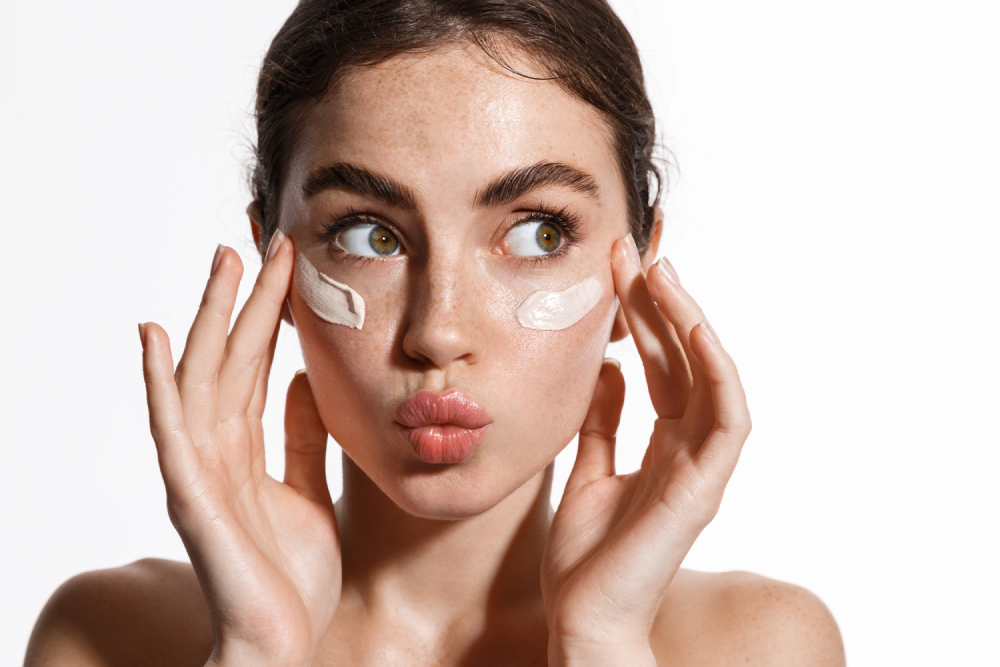As the sun’s rays intensify during the summer months, our skin faces increased exposure to UV radiation, leading to concerns like hyperpigmentation. Hyperpigmentation manifests as dark spots or patches, often resulting from sun exposure, inflammation, or hormonal changes.
Fortunately, with the right skincare regimen and protective measures, it’s possible to maintain an even and radiant complexion throughout the season.
Understanding Hyperpigmentation
Hyperpigmentation occurs when an excess of melanin, the pigment responsible for skin color, forms deposits in the skin. This condition can result from various factors, including sun exposure, inflammation, or hormonal fluctuations. While generally harmless, hyperpigmentation can affect one’s self-esteem and confidence.
Factors Contributing to Hyperpigmentation
Hyperpigmentation doesn’t show up overnight—and it’s rarely caused by just one thing. In reality, it’s a response. Your skin is trying to protect you by producing melanin, but sometimes that process goes into overdrive, especially when triggered by certain environmental, hormonal, or inflammatory factors.
Understanding these root causes is key to managing and preventing discoloration, particularly during high-risk months like summer. Here are the most common—and often overlapping—factors that contribute to unwanted pigmentation:
Sun Exposure
Let’s start with the biggest culprit: UV radiation. Sunlight stimulates the production of melanin, which is your body’s natural way of defending itself from UV damage. But when this process becomes overactive—like during repeated or intense sun exposure—it can lead to sunspots, freckles, or larger patches of discoloration.
Even brief time outdoors without SPF can activate melanin production, especially for those with existing hyperpigmentation or melasma. And remember: UV rays can still penetrate clouds, glass, and even your favorite beach umbrella.
Inflammation and Skin Trauma
Any kind of inflammation or trauma to the skin can leave behind what’s known as post-inflammatory hyperpigmentation (PIH). This includes:
- Acne breakouts
- Bug bites
- Cuts or scrapes
- Eczema flare-ups
- Aggressive exfoliation or chemical peels gone wrong
After the initial wound or irritation heals, you’re left with brown, red, or purple marks—a frustrating reminder long after the breakout has disappeared. PIH is especially common in medium to deep skin tones, which are more reactive in their melanin response.
Hormonal Fluctuations
Hormones play a significant role in skin pigmentation, especially for women. Estrogen and progesterone—both of which rise during pregnancy, oral contraceptive use, or hormone replacement therapy—can stimulate an overproduction of melanin.
This is why melasma, also known as the pregnancy mask, is often triggered during times of hormonal change. Melasma typically shows up as symmetric, blotchy patches on the cheeks, forehead, upper lip, and chin.
And while not dangerous, it’s notoriously stubborn and often worsens with sun exposure—making sun protection and gentle brightening skincare essential year-round.
Heat and Light (Yes, Even From Your Screens)
Did you know your skin responds not only to UV light, but also to infrared heat and blue light from devices? Prolonged exposure to these types of light can trigger pigmentation in sensitive skin types—even if you’re sitting inside.
This is particularly relevant during summer when ambient heat from being outdoors, exercising, or sitting in direct sunlight can cause flare-ups. Blue light emitted from phones, tablets, and laptops may also contribute to oxidative stress and melanin production.
Look for broad-spectrum sunscreens that offer blue light protection and antioxidant serums that defend your skin at a cellular level.
Genetics and Skin Tone
Some people are simply more prone to hyperpigmentation based on their genetic makeup and skin phototype. Fitzpatrick skin types IV–VI (olive to deep complexions) naturally produce more melanin and are more likely to experience PIH, melasma, or uneven skin tone following inflammation or UV exposure.
That doesn’t mean hyperpigmentation is inevitable—it just means your skincare and sun care routines need to be especially thoughtful and preventative.
Medications and Health Conditions
Certain medications can increase your skin’s sensitivity to sunlight, which in turn boosts your risk of hyperpigmentation. These include:
- Antibiotics (like tetracyclines)
- Nonsteroidal anti-inflammatory drugs (NSAIDs)
- Chemotherapy agents
- Hormonal medications
- Anti-seizure drugs
Additionally, health conditions such as Addison’s disease or certain autoimmune disorders can alter melanin production, sometimes leading to generalized darkening of the skin or isolated pigmentation patches.
Understanding what triggers your skin is the first step toward finding what heals it. Whether it’s the sun, a breakout, a shift in hormones, or a combination of all three—acknowledging the root cause helps guide the right treatments, the best lifestyle habits, and the most effective protection.
Summer Skincare Strategies to Prevent Hyperpigmentation
Hyperpigmentation may be common, but with mindful care, it’s completely manageable—especially in the summer, when your skin is most vulnerable to environmental triggers.
Whether you’re strolling in the sun, lounging by the water, or simply driving to work, those rays can deepen discoloration and undo months of progress. But with the right habits and products, your skin can thrive—radiant, protected, and deeply nourished.
Here are the essential skincare strategies to help you protect and brighten your complexion all summer long:
1. Daily Sunscreen Application (Your First and Best Defense)
If you only change one thing about your summer skincare routine, make it this: commit to SPF like it’s your job. UV rays are the number one cause of hyperpigmentation, and even the smallest unprotected exposure can trigger melanin production.
Look for a broad-spectrum SPF 30 or higher, ideally in a formula that fits seamlessly into your routine. Mineral sunscreens containing zinc oxide or titanium dioxide are excellent for sensitive or acne-prone skin, while lightweight fluid formulas work beautifully for combination types.
We recommend exploring ZO® Skin Health’s advanced sun protection options, like their Sunscreen + Primer SPF 30 for daily wear or the Broad-Spectrum Sunscreen SPF 50 for stronger defense—both designed to shield against UVA, UVB, and even HEV (blue light) damage.Pro Tip: Don’t forget often-missed areas like your ears, neck, and hands. And reapply every two hours—even if it’s cloudy, or you’re “just running errands.”

2. Incorporate Vitamin C for Skin (Brighten + Protect)
Few ingredients work as hard (or look as good doing it) as vitamin C. This powerhouse antioxidant not only brightens existing dark spots but also acts as a protective shield against free radicals and sun-induced damage.
When used daily—especially in the morning—vitamin C helps to:
- Suppress excess melanin production
- Smooth uneven tone
- Enhance overall luminosity
- Work synergistically with your sunscreen
Look for formulations that combine L-ascorbic acid with ferulic acid or vitamin E for boosted stability and effectiveness. Square One Aesthetics carries options designed for maximum absorption and glow, making this a seasonal essential you’ll reach for year-round.
3. Use Dark Spot Correctors (Targeted Treatment That Works)
Not all pigmentation is created equal, and that’s where targeted correctors come in. These potent products are specifically formulated to break up concentrated areas of melanin without compromising the rest of your skin barrier.
Effective ingredients to look for:
- Niacinamide: Reduces inflammation, fades discoloration, and strengthens the skin barrier
- Kojic Acid: A gentle melanin inhibitor sourced from fungi
- Arbutin: A botanical alternative to hydroquinone that helps lighten dark patches
- Licorice Extract: Naturally brightens and calms the skin
Square One Aesthetics offers AlumierMD EverActive C&E™ + Peptide, a clinical-grade corrector loaded with brightening ingredients and peptides to repair and fortify skin while treating pigmentation.
4. Opt for Gentle Chemical Exfoliation (Out with the Old)
Exfoliation is crucial for fading dark spots because it helps remove the pigmented skin cells from the surface layer—but summer calls for a kinder, gentler approach. Instead of abrasive scrubs, opt for chemical exfoliants that do the heavy lifting without damaging the skin:
- AHAs (like lactic and glycolic acid): Great for dry, dull skin and mild discoloration
- BHAs (like salicylic acid): Ideal for acne-prone or congested skin
- PHAs: The most gentle acid group, perfect for sensitive complexions
Exfoliate 2 to 3 times per week, preferably at night, and always follow with hydration. And yes, you still need sunscreen in the morning—it’s non-negotiable after exfoliating.
Need a no-guesswork solution? The AlumierMD AHA Renewal Serum available at Square One combines lactic acid with soothing botanicals, offering a perfectly balanced way to encourage cell turnover and reduce pigmentation.
5. Practice Smart Lifestyle Habits (Because It’s All Connected)
Let’s not forget the role of overall wellness. Pigmentation is often a reflection of internal imbalances, so supporting your skin from within is equally important. Tips for a lifestyle that supports bright, even skin:
- Stay hydrated—water supports skin detoxification
- Eat antioxidant-rich foods like berries, leafy greens, and citrus
- Prioritize sleep—nighttime is when your skin heals and regenerates
- Manage stress—cortisol spikes can contribute to inflammation and pigmentation
Radiant summer skin isn’t just a product of your serum game—it’s a reflection of how you care for your whole self.
In-Office Treatments (For Post-Summer Repair)
Even with the best protection, summer sun can still leave its mark. If you notice stubborn dark spots or uneven tone that your at-home routine can’t fix, professional treatments can help reverse the damage.
Advanced options for hyperpigmentation treatment include:
- Chemical Peels: Deep exfoliation to fade sun spots, melasma, and other pigment concerns.
- RF Microneedling: Combines microneedling and radiofrequency energy to rebuild collagen and smooth pigment irregularities.
- Laser Skin Treatments: Targets excess melanin while preserving healthy skin to gradually reduce discoloration.
While these treatments are typically best scheduled after summer, some can still be performed safely during the season with the right treatment plan, careful selection, and diligent aftercare.
When combined with a strong skincare routine, professional treatments offer a powerful way to repair, protect, and maintain your glow, whether you’re recovering from summer or staying ahead year-round.

Embrace Radiant Skin with Square One Aesthetics & Wellness
Achieving and maintaining an even skin tone during summer is attainable with the right approach. At Square One Aesthetics & Wellness in Tallahassee, FL, we offer a range of products and treatments designed to combat hyperpigmentation and enhance your skin’s natural glow.
Our expert team is dedicated to guiding you through personalized skincare solutions, ensuring your skin remains luminous and healthy throughout the season. Call us now to schedule your consultation!

